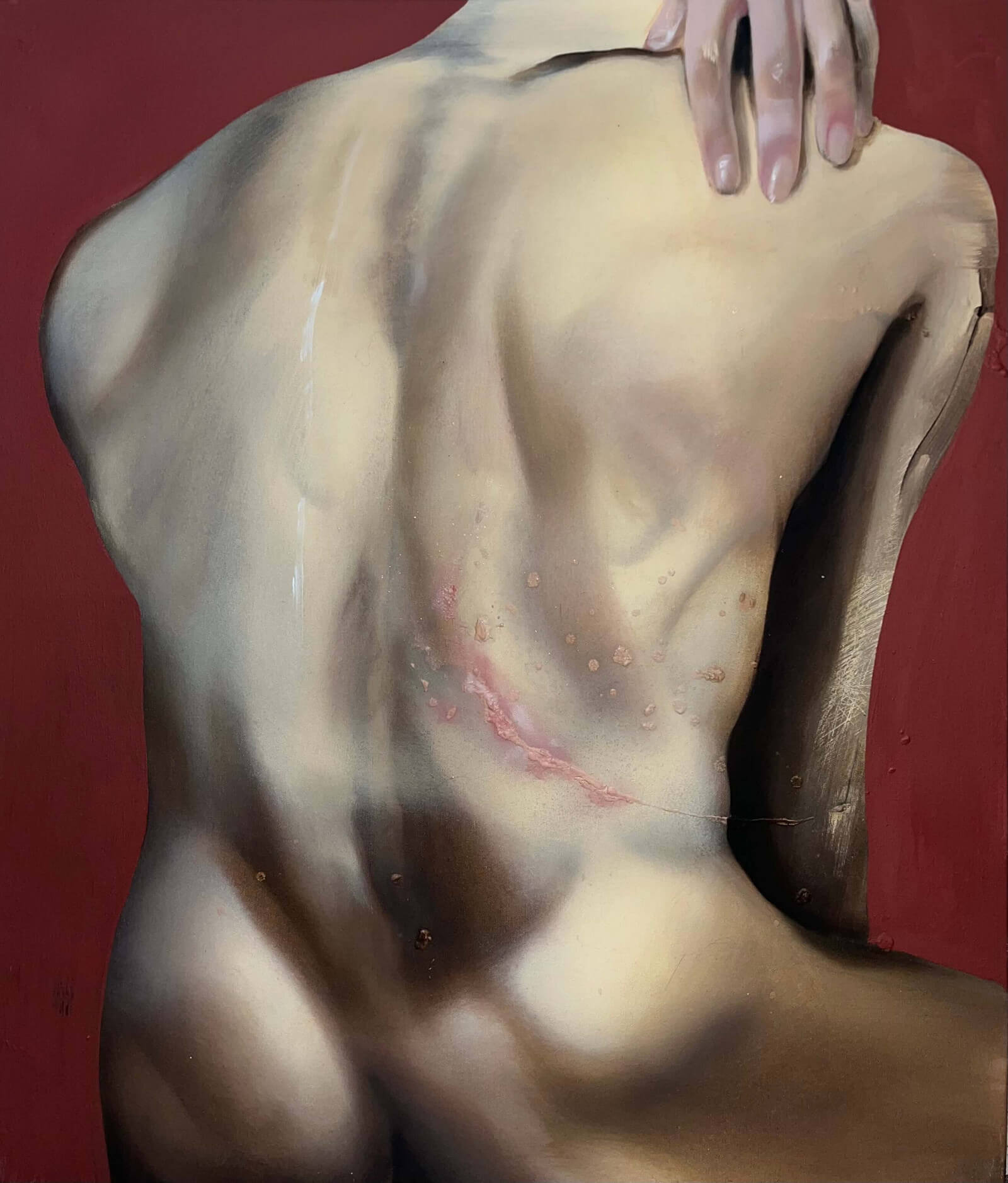Elsa Rouy
I Pictured Skin
➝ Download Press Release
Skin is the main barrier between our insides and the outside world. It is variously tough and penetrable, neatly containing our blood and guts while also being vulnerable to external prods and pressures. In Elsa Rouy’s new paintings, the skin is rendered viscerally in thick paint. Sometimes it seems waxy and stretched, as though her figures are wrapped in plastic packaging or hovering somewhere between living, breathing human and inanimate doll; in other works, it is broken and bruised, slashed through with thin streaks of paint, bubbling up from layers underneath, or flushed from burst capillaries under the surface. She also plays with items of clothing – removed from specific markers of time or culture – which hang from the body as though a natural part of it, pulled and tugged, simultaneously revealing and concealing the form that lies underneath.
Her figures invite the viewer into a tantalizing, twisted game, in which we might guess who is in charge and who is submissive. Sadistic and masochistic traits can be witnessed in the same figure, suggesting an internal struggle that the mind finds itself tangled up in, as different parts of the psyche vie for control. There is a stronger sense of isolation than in many of Rouy’s previous pieces. Numerous paintings focus on individual people, who act out on the canvas for an unseen audience, or huddle into themselves defensively. While some appear to be aggressors, there is a fragility to each of them in their emotionally secluded state. The violence in these new pieces is more subtle than her previous bodies of work, a complex energy that simmers beneath the surface. Viewers might first be drawn to the psychological unrest that runs through them, rather than more overt gore, only discovering their injured or twisted parts on closer inspection.
Even when pictured together, her figures often seem lost in their own thought, rather than merging into one. Some figures gaze straight at the viewer with sharply glistening eyes. Others direct their glassy stares to one side, as though fixated upon something in the gallery space. Many of their stances are uncomfortable; a woman poses with legs wide open as though emulating a position of empowered sexuality, but there is something awkward in her physicality, as her top half slumps in on itself. Another figure tumbles to the floor, and it is unclear whether those around her are pushing her down or helping her up. A pregnant woman glares with a fiercely self-possessed expression, her exposed baby bump protruding proudly.
Men’s bodies don’t always feature in Rouy’s work. Here they are vulnerable. A nude male figure hangs upside down by his feet, devoid of identifiable features, perhaps dead already, or an active participant in a power game. Others are curved over, with soft forms and flaccid genitals. The one muscular male body in the exhibition leans protectively in on himself, only his bruised back and shoulders visible within the limits of the canvas. Across the works, the women are bigger physically, perhaps enjoying moments of vengeful aggression towards the men. Is it left ambiguous whether their violence is warranted or welcome. Her figures at times feel trapped within their skin containers, while others seem ready to burst out, as their external edges blur into the space around them. The mind’s darkest parts appear ultimately uncontainable by the body, it psychic mess threatening to consume everything in sight.
Text by Emily Steer

